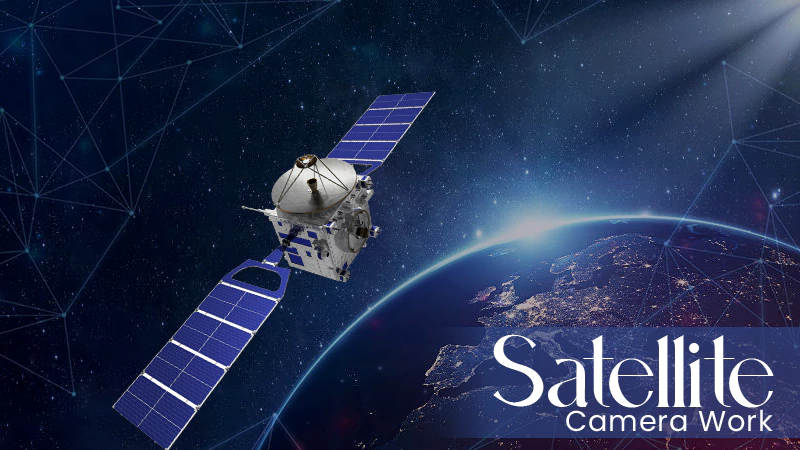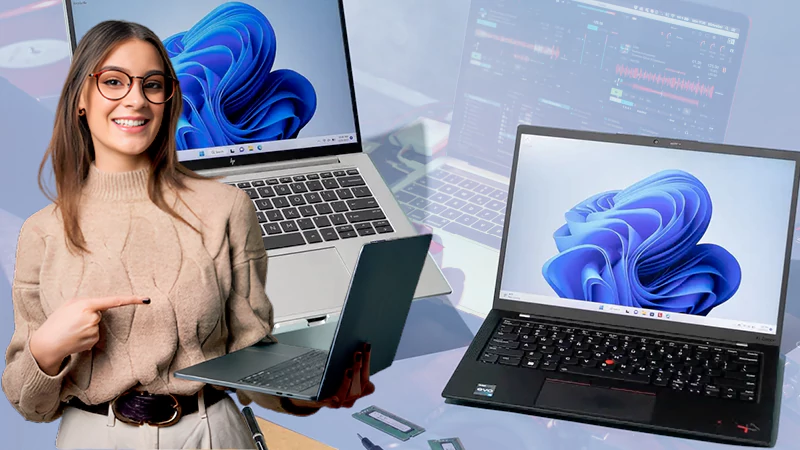What is a Microprocessor?
A microprocessor is a small electronic device that contains the arithmetic, logic, and control circuitry needed to fulfill the operations of a central processing unit in a digital computer. This type of integrated circuit, in effect, can comprehend and execute program instructions as well as perform arithmetic calculations.
Features of a Microprocessor
The qualities listed below make the microprocessor a versatile component in an instrumentation system.
- Power to make decisions based on previously entered values
- The reading’s consistency and the memory
- Interactivity and digital readout
- Processing in Multiple Threads
- Multiprocessing and time-sharing
- Storage, retrieval, and transmission of data
- Controlling many pieces of equipment effectively on a time-sharing basis
- Microprocessors are widely employed in situations where a large amount of processing is required.
History of the Microprocessor
The introduction of large-scale integration (LSI) in the early 1970s led to the creation of the microprocessor, which allowed thousands of transistors, diodes, and resistors to be packed onto a silicon chip less than 0.2 inches (5 mm) square. The Intel 4004, which was unveiled in 1971, was the first microprocessor. Very-large-scale integration (VLSI) greatly boosted the circuit density of microprocessors in the early 1980s. A single VLSI circuit of the 2010s can house billions of electronic components on a chip that is the same size as an LSI circuit. (See computer: The Microprocessor for further information on the history of microprocessors.)
Types of Microprocessors
CISC, RISC, and EPIC are the three types of microprocessors.
1) CISC: CISC is an acronym for Complex Instruction Set Computer. The instructions are in a complex format, as the name implies. It means that a single instruction can include multiple low-level instructions in it. For instance, loading data from memory, storing data in memory and executing fundamental operations, to name a few examples. Furthermore, a single instruction can have numerous addressing modes. Furthermore, because a single instruction contains several operations, it uses a limited number of registers. Intel 386, Intel 486, Pentium, Pentium Pro, Pentium II, and other CISC processors are a few examples of this type.
2) RISC: RISC is an acronym for “Reduced Instruction Set Computer”. As the name implies, the instructions are straightforward and so execute rapidly. Furthermore, the instructions are completed in a single clock cycle and only employ a few addressing modes. Furthermore, it takes advantage of many registers to reduce memory interaction. IBM RS6000, DEC Alpha 21064, DEC Alpha 21164, and others are examples of this type.
3) EPIC: EPIC is an acronym for Explicitly Parallel Instruction Computing. It takes advantage of compilers to allow the instructions to run in parallel. Furthermore, complicated instructions run at a lower clock frequency. It also uses 128-bit bundles to encode the instructions. Each bundle has three instructions, each of which is encoded in 41 bits, as well as a 5-bit template. This 5-bit template offers information on the different types of instructions as well as which ones can be executed in parallel. IA-64 (Intel Architecture-64) is a perfect example of this type.
Application of a Microprocessor
The following are some of the most important microprocessor applications:
- In personal computers, the microprocessor is used (PCs).
- LASER printers employ the microprocessor to achieve high speeds and make automatic picture copies.
- Modems, telephones, digital telephone sets, air reservation systems, and railway reservation systems all employ microprocessors.
- In medical instruments, the microprocessor is used to measure temperature and blood pressure.
- It’s also found in cell phones and television sets.
- It’s found in calculators and video games.
- It’s utilized in accounting software and data collection software.
- It’s a military-grade material. It is even utilized to control traffic lights.
- Microprocessors are found in a variety of household appliances, including microwave ovens and washing machines.
What is a Microcontroller?
A microcontroller is an integrated circuit (IC) that is a compact, low-cost, self-contained computer that is used in embedded systems to perform a specific purpose. A microcontroller (also known as a microcontroller unit or MCU) is a small computer that is built into a single chip. It can alternatively be described as a clock-driven, register-based programmable silicon device that receives input and processes it according to instructions stored in memory.

Features of a Microcontroller
The following are some of the most important characteristics of a microcontroller:
- Processor can be reset
- I/O pins for the program and variable memory (RAM)
- Central processor clocking device
- Timers for instruction cycles
History of the Microcontroller
Intel Corporation in the United States invented the microcontroller in 1971. The i4004 is a four-bit microprocessor. It was ordered for calculators by the Japanese business BUSICOM. The contract was then altered, and it was successfully sold as a general-purpose microcontroller. Following the 8-bit microcontrollers such as the ‘i8008’, ‘i8080A,’ and ‘i8085,’ Intel Corp. produced the ‘8086,’ a 16-bit microcontroller.
Types of a Microcontroller
Microcontrollers are utilized in a variety of applications, including automatic control of industries, autos, electronic medical equipment, appliances, and many more embedded systems. They’re popular because of their small size, low power consumption, and low cost. Microcontrollers are categorized into numerous categories based on a variety of factors:
- 8-bit bus-width
- Microcontroller: 16-bit
- Microcontroller: 32-bit
- Microcontroller: Embedded Memory is based on memory.
- External Storage Microcontroller
- CISC is an acronym for the Central Intelligence Service (Complex Instruction Set Computer)
- RISC is an acronym for “Reduced Instruction Set (Reduced Instruction Set Computers)
- Based on the Microcontroller Harvard University’s Architecture Von Neumann microcontroller (or Princeton), Microcontroller Architecture: Various Types of Commonly Used Microcontrollers
- 8051 PIC Microcontroller RENESAS Microcontroller AVR Microcontroller ARM Microcontroller AVR Microcontroller
Application of a Microcontroller
A microcontroller has a vast usage. A few of the uses are listed below:
- Light detecting and controlling devices are examples of microcontrollers used in everyday items.
- Devices for detecting and controlling the temperature
- Devices for fire detection and safety
- Devices for industrial instrumentation
- Devices for process control
- Microcontrollers in Industrial Control Devices: Industrial instrumentation devices use microcontrollers.
- Devices for process control
- Microcontroller Applications in Metering and Measurement Devices.
Difference Between Microprocessor and Microcontroller
The main difference between a microprocessor and a microcontroller is that a microprocessor only has a Central Processing Unit, whereas a microcontroller has a CPU, memory, and I/O all on one chip. A microcontroller processes a small number of instructions and is affordable, whereas a microprocessor is sophisticated and expensive and processes many instructions. A clear distinction between the two can be drawn on the basis of three major points which are listed below:
Power Consumption: Microcontrollers have a number of advantages, one of which is their low power consumption. A computer processor that performs a specific purpose requires less speed and, as a result, less power than one with a large computational capacity. A processor that consumes a lot of power may need to be plugged in or sustained by an external power supply, whereas a processor that consumes a modest amount of power could be powered for a long time by a small battery.
Speed: There is a substantial difference when it comes to clock speed. This is related to the assumption that microcontrollers are designed to perform a single task or application, but microprocessors are designed to handle more complicated, reliable, and unexpected computing activities. That means employing exactly the correct amount of speed and power to do the task – neither too much nor too little. As a result, many microprocessors now run at rates of up to 4 GHz, whereas microcontrollers can only run at 200 MHz or less.
Cost: Microcontrollers are generally less expensive than microprocessors. Microprocessors are typically designed for usage in higher-priced electronics. They’re also a lot more complicated because they’re designed to do a lot of different things, whereas microcontrollers normally just do one thing. Engineers use a microcontroller to develop and compile code for a specific application, then upload it into the microcontroller, which contains all of the essential computing features and components to run the code.
Summary
Finally, it is easy to say that microcontrollers and microprocessors are two different approaches to organizing and improving a computing system based on a central processing unit (CPU). A microprocessor contains a more powerful CPU on a single chip that interfaces to external peripherals, and a microcontroller, on the other hand, houses the CPU and all peripherals on the same chip. Microcontrollers are designed to execute a specific low-power application, making them excellent for embedded systems, but microprocessors are better suited to general computing applications requiring more complicated and diverse computations.








